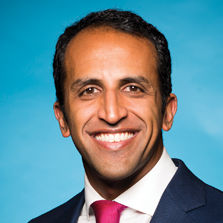
American Airlines announced last December that in April 2023 it would pull up to 40 percent of fares from EDIFACT channels and make them available only through direct or New Distribution Capability-enabled channels. On April 3, it did just that, officially disrupting distribution.
Despite loudly voiced concerns from many corners of the business travel industry about a lack of time to get ready—even though NDC had been around for more than a decade—American doubled down on its decision.
Just weeks after the content pull from EDIFACT, American's Vasu Raja on a first-quarter earnings call said the early results were "extremely encouraging." On the next earnings call in July, he pledged that the carrier was going to "accelerate the changes" and increasingly make "less and less of our fare content available through traditional technology."
At the same time, American upended its sales organization, effectively eliminating about 90 percent of the team's positions. Within months, several senior sales executives exited the company as well. Some corporate managers who may not have been among the carrier's biggest buyers suddenly found themselves without a dedicated sales rep. World Travel, Inc., in a newsletter claimed that American would no longer provide discounts to corporations with less than $1.5 million in annual AA spending, which the carrier never confirmed nor denied.
Many buyers were up in arms, with some deliberately pushing American content down in their booking tool displays or blocking it to shift share to other carriers. That, however, could be seen as making an already-bad situation worse.
During those earnings calls, Raja repeatedly said that corporate now accounted for only about 30 percent of American's revenue, down from 40 percent before the Covid-19 pandemic—and that 30 percent was split between managed and unmanaged travel. The managed portion had "plateaued" at about 80 percent of 2019 levels, while the unmanaged sector still showed growth.
Amid those depressed corporate contracted numbers, American continued its push to "modern" distribution—its website, app and NDC-enabled channels. By Sept. 30, nearly 80 percent of the carrier's sales were being made through those means.
In October, American introduced its new AAdvantage Business program, geared toward small and midsized enterprises, with only direct bookings counting toward the program's rewards. Again, Raja said the carrier was "encouraged" by its early results. He also added that "AAdvantage is very much the platform upon which we will build all of our commercial programs."
Coming soon, too, is continuous pricing—something United Airlines already offers, enabled through NDC.
Has American abandoned corporate travel? Or is it simply trying to speed up its modernization? Ask people in the industry, and you're sure to get a disparate range of responses.